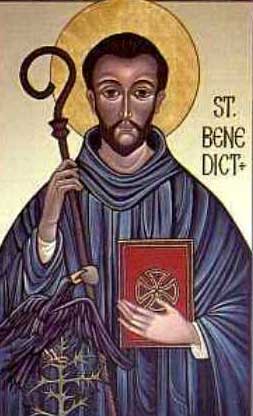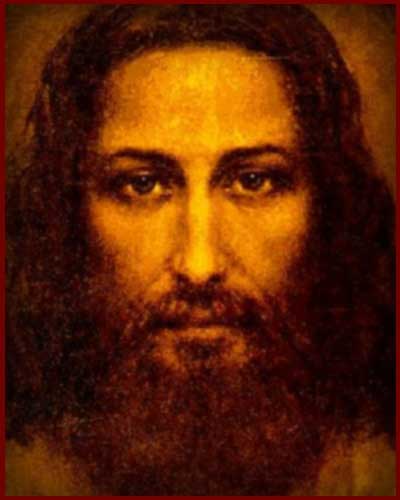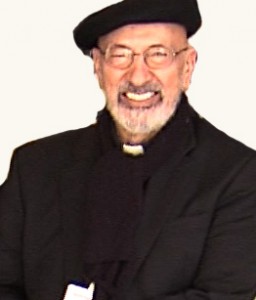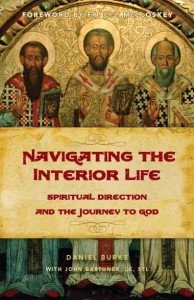BTP#30 St. Benedict, Listening and Discernment  – The Mystery of Faith in the Wisdom of the Saints.  In this episode Dr. Lilles offers a general introduction to this series, the mystical key to discernment, and a teaching  of St. Benedict.
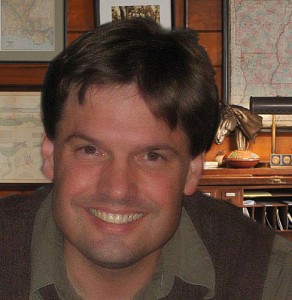
[powerpress]
Dr. Lilles offers 4 key points we should keep in mind as we move forward in this series
1. Â Â The Search for God
2. Â Â Listening to God -Â Lectio Divnia
3. Â Â Conversion to God – Conversatio Morum
4. Â Â Living with oneself and letting God fashion one into His image
All four points can be found in the “Holy Rule of St. Benedict” Â paragraph #58:
CHAPTER LVIII
Of the Manner of Admitting BrethrenLet easy admission not be given to one who newly cometh to change his life; but, as the Apostle saith, “Try the spirits, whether they be of God” (1 Jn 4:1). If, therefore, the newcomer keepeth on knocking, and after four or five days it is seen that he patiently beareth the harsh treatment offered him and the difficulty of admission, and that he persevereth in his request, let admission be granted him, and let him live for a few days in the apartment of the guests.
But afterward let him live in the apartment of novices, and there let him meditate, eat, and sleep. Let a senior also be
appointed for him, who is qualified to win souls, who will observe him with great care and see whether he really seeketh God, whether he is eager for the Work of God, obedience and humiliations. Let him be shown all the hard and rugged things through which we pass on to God.
If he promiseth to remain steadfast, let this Rule be read to him in order after the lapse of two months, and let it be said to him: Behold the law under which thou desirest to combat. If thou canst keep it, enter; if, however, thou canst not, depart freely. If he still persevereth, then let him be taken back to the aforesaid apartment of the novices, and let him be tried again in all patience. And after the lapse of six months let the Rule be read over to him, that he may know for what purpose he entereth. And if he still remaineth firm, let the same Rule be read to him again after four months. And if, after having weighed the matter with himself he promiseth to keep everything, and to do everything that is commanded him, then let him be received into the community, knowing that he is now placed under the law of the Rule, and that from that day forward it is no longer permitted to him to wrest his neck from under the yoke of the Rule, which after so long a deliberation he was at liberty either to refuse or to accept.
Let him who is received promise in the oratory, in the presence of all, before God and His saints, stability, the conversion of morals, and obedience, in order that, if he should ever do otherwise, he may know that he will be condemned by God “Whom he mocketh.” Let him make a written statement of his promise in the name of the saints whose relics are there, and of the Abbot there present. Let him write this document with his own hand; or at least, if he doth not know how to write, let another write it at his request, and let the novice make his mark, and with his own hand place it on the altar. When he hath placed it there, let the novice next begin the verse: “Uphold me, O Lord, according to Thy word and I shall live; and let me not be confounded in my expectations” (Ps 118[119]:116). Then let all the brotherhood repeat this verse three times, adding the Gloria Patri.
The let that novice brother cast himself down at the feet of all, that they may pray for him; and from that day let him be counted in the brotherhood. If he hath any property, let him first either dispose of it to the poor or bestow it on the monastery by a formal donation, reserving nothing for himself as indeed he should know that from that day onward he will no longer have power even over his own body.
Let him, therefore, be divested at once in the oratory of the garments with which he is clothed, and be vested in the garb of the monastery. But let the clothes of which he was divested by laid by in the wardrobe to be preserved, that, if on the devil’s suasion he should ever consent to leave the monastery (which God forbid) he be then stripped of his monastic habit and cast out. But let him not receive the document of his profession which the Abbot took from the altar, but let it be preserved in the monastery.
Dr.Anthony Lilles is a Catholic husband and father of three teaching Spiritual Theology at St. John Vianney Theological Seminary. He  teaches spiritual theology and spiritual direction to transitional deacons, and the spiritual classics to the men who enter the Spirituality Year, a year of prayer in preparation for seminary formation.  He is the author of the “Beginning to Pray”  Catholic blog spot.
For other episodes in the series visit the Discerning Hearts page for Dr. Anthony Lilles
Here is the bibliography that Dr. Lilles spoke of in this episode:
The Mystery of Faith in the Wisdom of the Saints
Saints, other figures, dates and bibliographic information
St. Benedict of Nursia – b. 480 - d. 547.
St. Benedict.  The Rule. Edited by Timothy Fry, O.S.B. New York: Vintage Books, Random House, 1981, 1998. (more…)
Tags: Anthony Lilles, blessed john paul, Blessed Sacrament, Child Jesus, Discerning Hearts, spiritual direction, Spirituality Year
This entry was posted on Monday, September 30th, 2013 at 8:00 am
You can follow any responses to this entry through the RSS 2.0 feed.
Episode 21 Beginning to Pray: Â St. Hildegard von Bingen and “The Iron Mountain”

[powerpress]
From Dr. Lilles’ “Beginning to Pray” blog site:
September 17 is the feast of St. Hiildegard of Bingen. She lived from 1098-1179. A Benedictine Nun, at the age of 42, she was given visions and commanded rise up and cry out what she saw. She obeyed and produced a set of writings known today as Scivias.
Her first vision is of a hidden mountain, the mountain of God’s throne, an iron mountain of immutable justice hidden in divine glory. A purifying Fear of the Lord contemplates this splendor. Not the kind of fear that pulls away to protect itself. Rather the kind of fear that is vigilant and sees the truth. Eyes which gaze with this holy fear can never be satisfied with the merely mediocre. They guard against every form of compromise. The glory they behold demands absolute allegiance, complete surrender, and total humility.
In this description, is St. Hildegard suggesting a way by which we might enjoy the same vision she has shared in? This is no exercise in esoteric navel gazing. Her vision demands a journey beyond our own self-pre-occupation and into real friendship with God, a friendship protected by the strength of divine justice. She sees the truth in a way that demands an ongoing conversion of life.
She is well-formed in St. Benedict’s conversatio morum. The mountain she sees is not a truth we scrutinize so much as the truth that scrutinizes us: a scrutinizing of all our thoughts and actions in light of the Gospel. The truth she beholds demands repentance from the lack of justice we allow ourselves to slip into. The iron mountain she contemplates renders futile every effort to conform the Gospel to our own ways and invites us to be transformed by its just demands.
Today, where all kinds of cruelty are so easily excused and any form of self-indulgence so readily lifted up to the level of a fundamental human right, we need to rediscover the shadow of the iron mountain from which St. Hildegard cries out to us. Only under the glory of this mountain can we find the peace that the Lord has come to give. Only in the blinding light into which Holy Fear gazes can we find the humility to love one another the way Christ has loved us.
Dr. Anthony Lilles is a Catholic husband and father of three teaching Spiritual Theology at St. John Vianney Theological Seminary. He  teaches spiritual theology and spiritual direction to transitional deacons, and the spiritual classics to the men who enter the Spirituality Year, a year of prayer in preparation for seminary formation.  He is the author of the “Beginning to Pray”  catholic blog spot.
For other episodes in the series visit the Discerning Hearts page for Dr. Anthony Lilles
The music that is used comes from 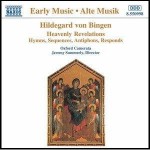
This the text we use  for our readings comes from:
Tags: Anthony Lilles, catholic, catholic podcast, catholic prayer, cathollc spirituality, father, mystic, mystic of the Church, spiritual direction, Spirituality Year, st hildegard of bingen
This entry was posted on Tuesday, September 17th, 2013 at 4:16 am
You can follow any responses to this entry through the RSS 2.0 feed.
Episode 26 Beginning to Pray Special: Â “The Face of Christ: Radiance of Mercy and Sign of Hope”

[powerpress]
Dr. Lilles’ continues his  Day of Recollection offered in April 2013.
In an age of great confusion and rejection of God, St. Therese of Lisieux, Blessed Elisabeth of the Trinity and John Paul II find in Christ the reason for our hope. Â Starting with St. Therese’s devotion to the Holy Face expressed in living her life as a offering to merciful love, we will see how the pathway she pioneered was followed and further developed in the spiritual missions of Blessed Elisabeth of the Trinity and Blessed John Paul II. Â In particular, we will contemplate the relationship of mercy and hope that the Face of Christ helps us to see when hope and mercy are most needed so that we too can follow the path of mercy.
Dr.Anthony Lilles is a Catholic husband and father of three teaching Spiritual Theology at St. John Vianney Theological Seminary. He  teaches spiritual theology and spiritual direction to transitional deacons, and the spiritual classics to the men who enter the Spirituality Year, a year of prayer in preparation for seminary formation.  He is the author of the “Beginning to Pray”  catholic blog spot.
For other episodes in the series visit the Discerning Hearts page for Dr. Anthony Lilles
Tags: Anthony Lilles, Discerning Hearts, father, spiritual direction
This entry was posted on Thursday, August 8th, 2013 at 11:36 am
You can follow any responses to this entry through the RSS 2.0 feed.
Episode 24 Beginning to Pray Special: Â “Gazing on the Face of Christ with the Saints”

[powerpress]
Dr. Lilles’ continues his  Day of Recollection offered in April 2013.
Here is the continuation of the first presentation which focuses on the Mystical Saints who can help us to gaze on the Face of Christ:
Anthony will introduce the saints who will guide us through our reflections: Â St. Teresa of Avila, St. John of the Cross, St. Therese of Lisieux, Blessed Elisabeth of the Trinity and Blessed John Paul II. Â He also answers questions about methods of prayers, teaching others to pray, and how can one help restore the sense of the sacred to the mass and Eucharistic adoration.

St. Teresa of Avila
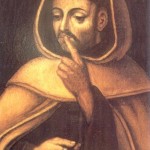
St. John o the Cross
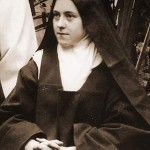
St. Therese of Lisieux
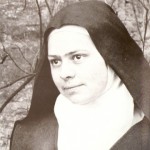
Blessed Elizabeth of the Trinity
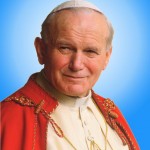
St. John Paul II
Dr.Anthony Lilles is a Catholic husband and father of three teaching Spiritual Theology at St. John Vianney Theological Seminary. He  teaches spiritual theology and spiritual direction to transitional deacons, and the spiritual classics to the men who enter the Spirituality Year, a year of prayer in preparation for seminary formation.  He is the author of the “Beginning to Pray”  catholic blog spot.
For other episodes in the series visit the Discerning Hearts page for Dr. Anthony Lilles
Tags: Anthony Lilles, catholic, catholic podcast, catholic prayer, cathollc spirituality, Discerning Hearts, father, prayer, spiritual direction, Spirituality Year
This entry was posted on Tuesday, June 25th, 2013 at 8:45 am
You can follow any responses to this entry through the RSS 2.0 feed.
Msgr. Esseff, after leading a retreat consisting of over 140 Spiritual Directors from around the country, discusses Discernment.  Why is is it such an important aspect of our lives?  What is the role of the Spiritual Director?  What are the signs of  a good spiritual director ? How do we encounter them?
From the NABÂ
Numbers Chap 21
From Mount Hor they set out by way of the Red Sea, to bypass the land of Edom, but the people’s patience was worn out by the journey;5so the people
complainedd against God and Moses, “Why have you brought us up from Egypt to die in the wilderness, where there is no food or water? We are disgusted with this wretched food!â€*
6So the LORD sent among the people seraph* serpents, which bite the people so that many of the Israelites died.7Then the people came to Moses and said, “We have sinned in complaining against the LORD and you. Pray to the LORD to take the serpents from us.†So Moses prayed for the people,8and the LORD said to Moses: Make a seraph and mount it on a pole, and everyone who has been bitten will look at it and recover.*9Accordingly Moses made a bronze serpent* and mounted it on a pole, and whenever the serpent bit someone, the person looked at the bronze serpent and recovered.
Msgr. John A. Esseff is a Roman Catholic priest in the Diocese of Scranton. He was ordained on May 30th 1953, by the late Bishop William J. Hafey, D.D. at St. Peter’s Cathedral in Scranton, PA. Msgr. Esseff served a retreat director and confessor to Blessed Mother Teresa.   He continues to offer direction and retreats for the sisters of the missionaries of charity around the world. Msgr. Esseff encountered St.  Padre Pio,  who would become a spiritual father to him. He has lived in areas around the world,  serving  in the Pontifical missions, a Catholic organization established by Bl. Pope John Paul II to bring the Good News to the world especially to the poor. Msgr. Esseff assisted the founders of the Institute for Priestly Formation and continues to serve as a spiritual director for the Institute. He continues to  serve as a retreat leader and director to bishops, priests and sisters and seminarians and other religious leaders around the world.  Â
Tags: Numbers Chap, PA, retreat, spiritual direction, spiritual director
This entry was posted on Thursday, March 28th, 2013 at 3:37 am
You can follow any responses to this entry through the RSS 2.0 feed.
It was with the greatest delight that I had the opportunity to meet Dan Burke at the recent Catholic Marketing Trade Show, held in Dallas, 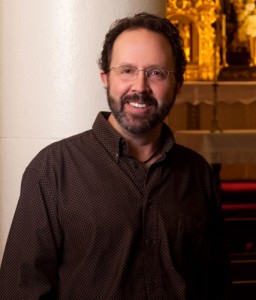 TX.  Dan is the incredibly gifted founder of “Catholic Spiritual Direction“, a fantastic website, where I have received a great deal of insight and inspiration.  To read his work on the site is a wonderful thing, but to talk with Dan and hear him share the beauty of our Catholic Spiritual Tradition is pure gift.  He really gets it!  More than just the “how-to’s”, Dan understands the “why” of  prayer and discernment and he communicates it beautifully.  He appreciates what our hearts ache for; he shares with us that it begins and ends with an encounter with Jesus…the Way, the Truth, and the Life.  Dan Burke launched out on the “digital sea” long before many others in order to bring to those who were seeking the richness of authentic Catholic Spiritual Direction …and for that blessing we have much to thank him for.
TX.  Dan is the incredibly gifted founder of “Catholic Spiritual Direction“, a fantastic website, where I have received a great deal of insight and inspiration.  To read his work on the site is a wonderful thing, but to talk with Dan and hear him share the beauty of our Catholic Spiritual Tradition is pure gift.  He really gets it!  More than just the “how-to’s”, Dan understands the “why” of  prayer and discernment and he communicates it beautifully.  He appreciates what our hearts ache for; he shares with us that it begins and ends with an encounter with Jesus…the Way, the Truth, and the Life.  Dan Burke launched out on the “digital sea” long before many others in order to bring to those who were seeking the richness of authentic Catholic Spiritual Direction …and for that blessing we have much to thank him for.
[powerpress]
And here’s great news…Dan has a new book coming from Emmaus Road Publishing
(get your orders in now!)
You can find Dan’s book hereÂ
Calling All Catholics Into A Deeper Union …
“Most of us have questions about spiritual direction. What is it? Is it for me? What if I can’t find a spiritual director? These questions and more are well answered in Dan Burke’s book. The Lord is clearly calling all Catholics into a deeper union with him. This book, in a style which is both inspiring and practical, provides some of the Church’s most important wisdom about how to respond to this call.”
Ralph Martin
Tags: catholic spiritual direction, spiritual direction
This entry was posted on Monday, September 3rd, 2012 at 12:33 am
You can follow any responses to this entry through the RSS 2.0 feed.
EWTN Global Catholic Television Network: EWTN Live – Fr. Mitch Pacwa, SJ – Fr. David J. Simonetti – The Benefits of Spiritual Direction
Fr. Simonetti spoke on the topic of Spiritual Direction on EWTN last night, and spoke for a few minutes about his time with IPF’s Spiritual Direction Training Program
Tags: catholic, catholic podcast, catholic prayer, cathollc spirituality, David J. Simonetti, Global Catholic Television Network, spiritual direction
This entry was posted on Friday, September 9th, 2011 at 5:12 pm
You can follow any responses to this entry through the RSS 2.0 feed.

